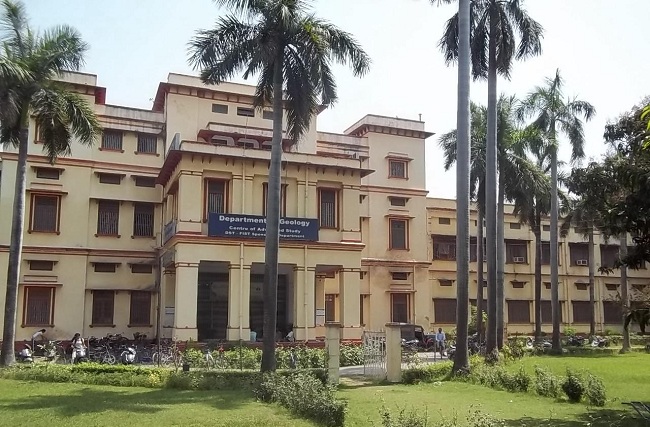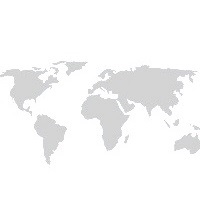About Us
The full fledged Department of Geology was established on January 22, 1923 under the leadership of late Prof. Krishna Kumar Mathur. As the premier institution of Geology in the country, the Department has produced eminent scholars who more than often headed most of the leading geological organizations of India such as GSI, ONGC, AMD, CGWB, MECL, CIL, NMDC, as also in teaching and research institutions in top capacities at national and international levels.
Our Department is unique in the country in having competent and distinguished faculties in almost all branches of Geology: Mineralogy, Crystallography, Structure and Tectonics, Petrology (Igneous, Metamorphic and Sedimentary), Stratigraphy, Paleontology (Invertebrate, Vertebrate, Micropaleontology, Paleobotany), Oceanography, Geochemistry, Fuel Geology (Coal and Petroleum), Hydrogeology, Economic Geology, Engineering Geology, Remote Sensing & Photo Geology, Mineral Exploration & Geomorphology. The Department of Geology integrates theory, modeling, experiment, measurement and observation in order to reach a full understanding of the problems we are addressing. Although research is rooted in fundamental science, much of it is applied to the exploitation of earth resources and management of the environment.
The Department finds itself singularly fortunate in being equally strong both in hard rock (petrology, mineralogy and geochemistry) and soft rock domains (palaeontology, stratigraphy, sedimentary, coal and petroleum geology). In addition there is a equally strong third group of structure and tectonics, hydrogeology, engineering geology and remote sensing.The specialists in the hard rock domain have diversified interests from deep crust-mantle to earth?s surface; origin, transport and interaction of melts and fluids in the crust and mantle with substantive research funding over the last many years from DST. The team in the soft rock domain brings observational and analytical elements of field geology related to palaeontology, sedimentalogy, structural geology to bear on the processes and dynamics of the sedimentary basins, continental margins and plate boundaries at constantly increasing geological refinement with generous funding from agencies like DST. The third group has assumed even increasing topical importance being involved with problems of groundwater management, water pollution, disposal of waste, urban development, environmental planning, application of remote sensing and engineering projects.
As Geologists, we are responsible to locate and assist in the extraction of mineral deposits such as gold, metallic ores, coal, petroleum and even building materials and economically useful clays. More common but vital materials such as stone aggregates for making concrete and road building, limestone for the cement, fertilizer and chemical industries, and sand for building or glass manufacture.
In the Department researches are perused by self-organized research groups. Since all the themes we are addressing, require multi-disciplinary approaches, there is regular communication and interaction across group boundaries and with many groups outside the Department and the University. For many decades, the Department has used the fascinating Himalayas, South, Western India, and Central India as natural laboratories. However, our activities also focus on the Indo-gangetic plains and even Indian ocean.
In appreciation of the excellent research carried out by the Department, it has been liberally funded by many Government agencies. In recognition of internationally significant scientific contribution to the geological sciences, several faculty members have been invited by foreign institutions for collaborative researches, invited lectures, congresses, symposia and seminars. Presently several active research programmes with German, U.S., French, British, Canadian, Japanese, Brazilian, and Mexican scientists are in progress. Many faculty members are also actively involved in global research programmes as members of International Union of Geological Sciences (IUGS), International Geological Correlation Programme (IGCP), International Sub-Commission of Stratigraphy (ISJS), Deep Sea Drilling Programme (DSDP) and Ocean Drilling Programme (ODP).
The laboratories in the Department are moderately well equipped with sophisticated instruments to support high quality teaching and research. The Department has a well maintained Museum (Prof. Rajnath Memorial Museum) that has a display of rocks, minerals and fossils from type areas and other geologically important horizons in India and abroad collected by its faculty members and research scholars. The Department also has a rich Library (Prof. K. K. Mathur Memorial Library) housing a sizable number of reference books, memoirs and records of GSI and other research journals.
The UGC upgraded the Department to COSIST (1992) and to Special Assistance Programme (SAP until March 2009). At present the DST has sponsored our Department under FIST (until March 2008) programme. With recognition in the national and international arena for its path breaking researches in geological sciences, the Department has been elevated to a Centre of Advanced Study in 2010 and also upgraded to FIST level II.
The UG and PG programmes following rigorous semester system. The Department possesses a 3 year (6 semesters) B.Sc. (Hons.) Geology, 2 year (4 semester) M.Sc., Petroleum Geosciences and 3 year (6 semesters) M.Sc. (Tech.) Geology.
Outlook for employment in the Department is at its all-time best Geology jobs are more than just exploration for oil and mining: understanding geology underpins diverse efforts in urban planning, environmental restoration, analytical and research laboratories. So our graduates with a strong Geology training can confidently look forward to employment opportunities in a wide assortment of industries in addition to research funding institute.
|



 ARIIA Submitted details
ARIIA Submitted details
 IOE Scheme
IOE Scheme
 CEC E-content
CEC E-content
 External Proxy
External Proxy
 Institutional Repository
Institutional Repository
 Write To Administration
Write To Administration
 NIRF
NIRF
 Mahamana Malaviya Mission
Mahamana Malaviya Mission
 Annual Reports
Annual Reports
 Exe. Council's Agenda(s) and MoM(s)
Exe. Council's Agenda(s) and MoM(s)
 E-Mail
E-Mail
 Students Strength Category Wise
Students Strength Category Wise
 Holidays
Holidays
 Central Library
Central Library
 Computer Centre
Computer Centre
 USIC Level II
USIC Level II
 Malaviya Research Centre for Ganga
Malaviya Research Centre for Ganga
 Mountaineering Centre
Mountaineering Centre
 Chief Proctor Office
Chief Proctor Office
 Shri Vishwanath Mandir BHU
Shri Vishwanath Mandir BHU
 Tenders Notices
Tenders Notices
 Alumni
Alumni
 Internal Quality Assurance Cell
Internal Quality Assurance Cell
 Re-accreditation Report
Re-accreditation Report
 Intellectual Property Right Cell
Intellectual Property Right Cell
 Press & Publication Division
Press & Publication Division
 Information and Public Relation's Office
Information and Public Relation's Office
 Women's Grievance Cell
Women's Grievance Cell
 SC/ST/OBC Cell
SC/ST/OBC Cell
 N.S.S.
N.S.S.
 N.C.C.
N.C.C.
